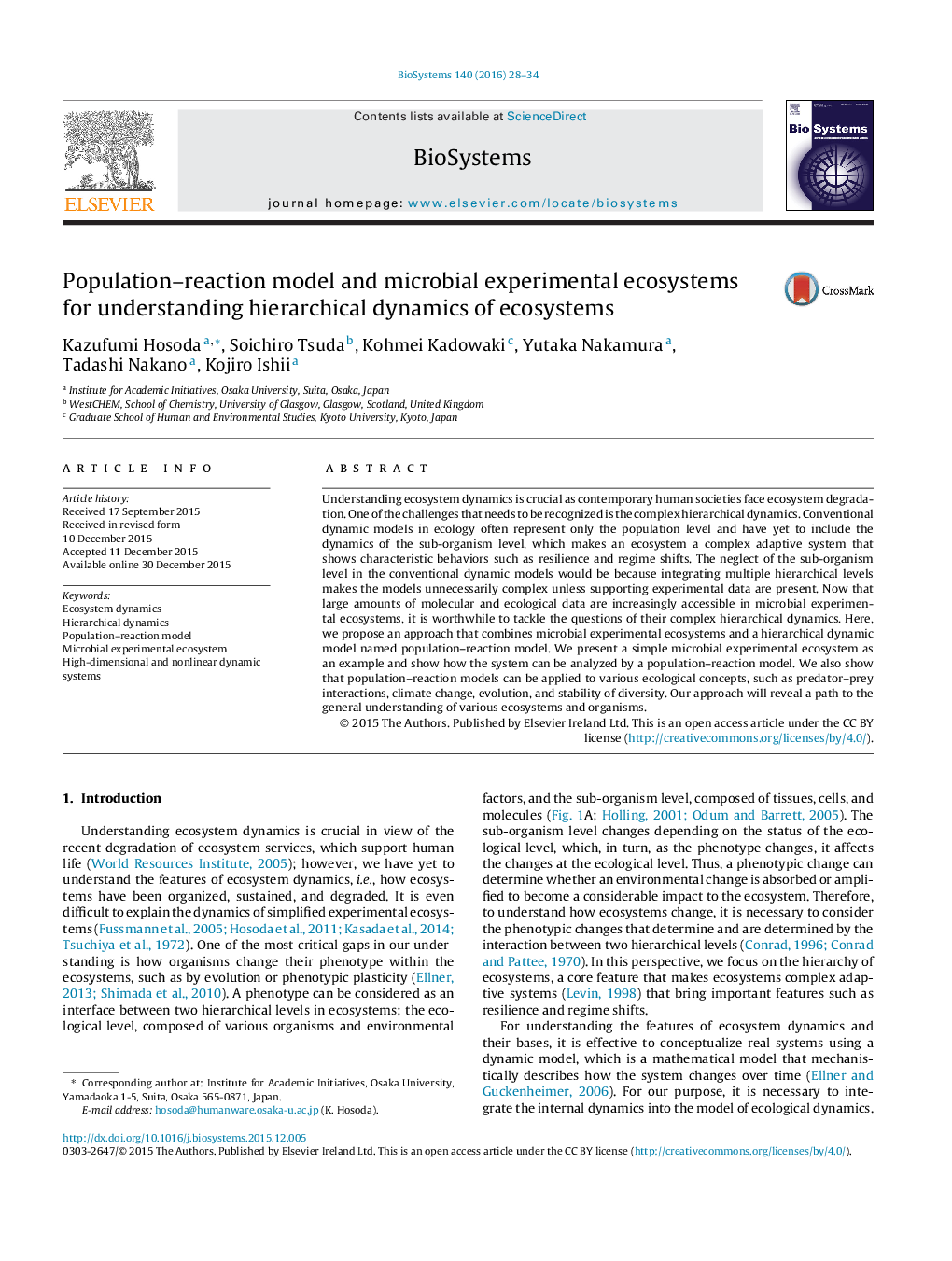| Article ID | Journal | Published Year | Pages | File Type |
|---|---|---|---|---|
| 8406913 | Biosystems | 2016 | 7 Pages |
Abstract
Understanding ecosystem dynamics is crucial as contemporary human societies face ecosystem degradation. One of the challenges that needs to be recognized is the complex hierarchical dynamics. Conventional dynamic models in ecology often represent only the population level and have yet to include the dynamics of the sub-organism level, which makes an ecosystem a complex adaptive system that shows characteristic behaviors such as resilience and regime shifts. The neglect of the sub-organism level in the conventional dynamic models would be because integrating multiple hierarchical levels makes the models unnecessarily complex unless supporting experimental data are present. Now that large amounts of molecular and ecological data are increasingly accessible in microbial experimental ecosystems, it is worthwhile to tackle the questions of their complex hierarchical dynamics. Here, we propose an approach that combines microbial experimental ecosystems and a hierarchical dynamic model named population-reaction model. We present a simple microbial experimental ecosystem as an example and show how the system can be analyzed by a population-reaction model. We also show that population-reaction models can be applied to various ecological concepts, such as predator-prey interactions, climate change, evolution, and stability of diversity. Our approach will reveal a path to the general understanding of various ecosystems and organisms.
Keywords
Related Topics
Physical Sciences and Engineering
Mathematics
Modelling and Simulation
Authors
Kazufumi Hosoda, Soichiro Tsuda, Kohmei Kadowaki, Yutaka Nakamura, Tadashi Nakano, Kojiro Ishii,
